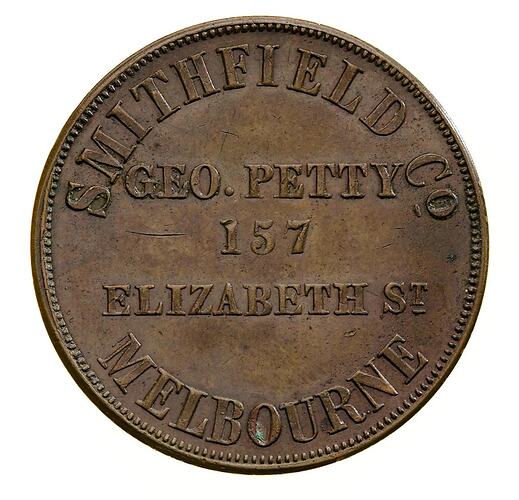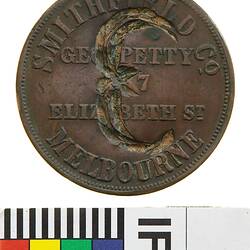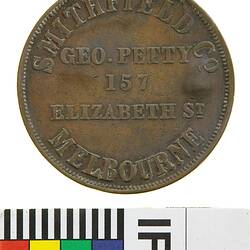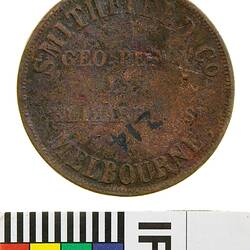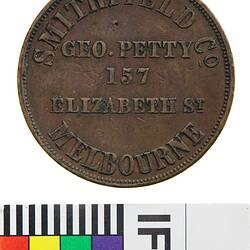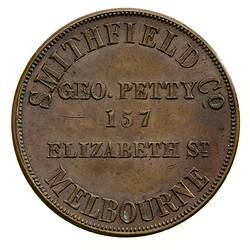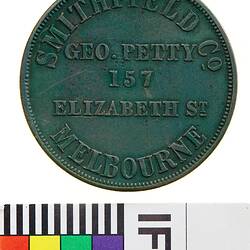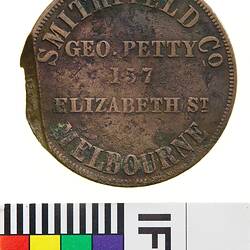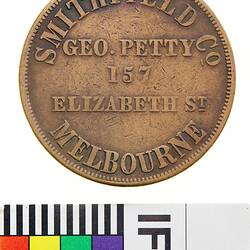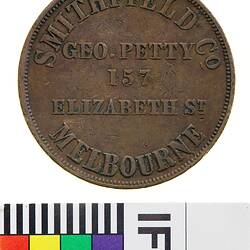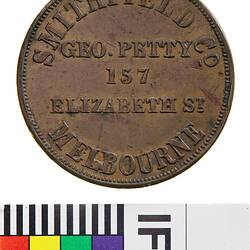According to Gardner 'There were few names better known in Melbourne from the early fifties up to the seventies than that of George Petty, butcher, and there are many who remember his shops in Bourke-street and Elizabeth-street even now.' (Gardner, 1911)
Petty is said to have arrived as a boy in Melbourne, coming as a sailor on a ship that brought settlers to Port Phillip, but the date of his arrival is not known. The first trace of him is working in a butcher's shop on Elizabeth Street in 1853. By 1854 he was listed as the owner of a butchery at 105 Elizabeth Street.
Over the next fifteen years he ran businesses at the following locations (source: Melbourne Directories, 1851 - 1870 in the collection of the State Library of Victoria):
1855: 105 and 221 Elizabeth Street
1856: Not listed
1857: 157 Elizabeth Street
1858: Ditto
1859:157 and 221 Elizabeth Street
1860 -1870: 217 Elizabeth and 205 Bourke Street East
During 1864 Petty had stables in Stephen Street, and from 1863 his private residence was in Spring Street.
John Hope gives the following, slightly different, chronology of Petty's business addresses:
".by 1853, [Petty] worked for a Mr Hoffman, a German butcher, at 157 Elizabeth Street. George had ambitions and was able to acquire Mr Hoffman's business. He then bought another shop, in Bourke Street, belonging to a Mr Crossley. Crossley Street runs between Bourke and Little Bourke Street, just east of Exhibition Street. Some time later (Sir) William Angliss bought that shop. Nearby was Bignell's butcher's shop, also bought out by Petty who only kept it for a short time."
He also had a range of other business interests, and was soon known as a wealthy man, as well as one of the best butchers in Melbourne. Soon before his retirement he became the owner of the Maribyrnong Stud, enabling him to run a portion of the production-side, as well as the retail-side of his business.
He died on 19 November 1877, leaving a widow, two sons and three daughters.
He issued his three tokens, as Sharples points out, under the name of Smithfield & Co., a business name which only occurs in 1856 directories, effectively dating the issues to either later 1855 or 1856. The tokens were struck for him by W.J. Taylor of London.
References:
Gardner, F. (1911). Trade tokens and the firms who issued them, The Australian Storekeepers and Traders Journal, 30 November, p.10
Melbourne Directories, 1851-1870, SLV Collection
Sharples, J. (1993). 'Catalogue of Victorian Trade Tokens' in Journal of the Numismatic Association of Australia, Vol. 7, December, Australia, pp.54-55.
Hope, John Petty, George (2005). Unpublished MSS., 2 pps.
More Information
-
Keywords
-
Localities
-
Authors
-
Article types
